
 |
Edison's Optics |
"I would annex the planets if I could. I often think of that. It makes me sad to see them so clear and yet so far."
British imperialist Cecil Rhodes, 1853-1902
Space: 1889TM is GDW's game of science fiction roleplaying in a more civilized time, written (and copyrighted) by Frank Chadwick. (See below for important copyright and trademark information.) In Space: 1889TM, colonial ambassadors and gentleman adventurers, from the height of Victorian colonial expansion in Europe, travel across the sea of space, in stately ships powered by Edison's invention, the ether propellor. They visit the stately canals of Mars, crossing the trackless deserts and bringing civilization to the savages that dwell there; they explore the steamy jungles of Venus, rife with strange plant life and dinosaurs; they penetrate the deepest caves of Luna, searching for trace of the mysterious Selenites; and on all these worlds and others, they engage in international intrigue, the pursuit of science, mystery, discovery, and adventure.
 All this is laid out in the 1996 GDW publication Space: 1889TM, which includes a wealth of background material along with a set of rules. What if you don't like those rules? That's what Edison's Optics is for; you can combine the background material from Space: 1889TM with the rules of Prism. Or, if you don't have Space: 1889TM, these rules will give you a sense for how to use Prism with a "steampunk" setting of your own design, based on the writings of Verne, Wells, Bergerac, Doyle, and others, and on your own imagination.
All this is laid out in the 1996 GDW publication Space: 1889TM, which includes a wealth of background material along with a set of rules. What if you don't like those rules? That's what Edison's Optics is for; you can combine the background material from Space: 1889TM with the rules of Prism. Or, if you don't have Space: 1889TM, these rules will give you a sense for how to use Prism with a "steampunk" setting of your own design, based on the writings of Verne, Wells, Bergerac, Doyle, and others, and on your own imagination.
Prism is a work in progress; as of this writing, one of the largest steps on the way to Prism v2, Skill Trees, is in testing but hasn't been integrated into the main rules. Edison's Optics assumes you're using the Skill Tree system. I'll assume you're familiar with the genre and background information, or willing and able to make it up yourself, and just focus on the rules required. That includes the abilities and weaknesses you need and their costs, skill trees for the specialized skills of the genre, rules on inventions and inventing, and a quick guide to converting values in Space: 1889TM supplements.
![]()
 About The Title
About The Title Unlike the supplements for other noteworthy universal games (GURPS, CORPS, and FUDGE in particular), supplements for Prism aren't given generic names. Instead, each supplement describing a genre or setting will be named by finding a sobriquet for "prism" or "crystal" that would be used in, or is evocative of, that setting. In an era of fantastic science, a cut glass lens might be referred to by a scientist or inventor as an optic, and could be used for experiments to understand the nature of light, to focus or scatter light in an invention, or even to use light to shape the world itself. Who knows what marvels might spring from Edison's optics?
![]()
Following are a list of abilities and weaknesses that adventurers from the Victorian era might have.
Associates (variable): It is common for characters in the Victorian era, especially those of high Social Level, to have associates, NPCs who attend to them. For instance, butlers, maidservants, bodyguards, confidential secretaries, henchmen, etc. Adventuresses often travel with a dim-witted, easily-manipulated male companion who provides a facade for her adventures. Alternately a character might be a butler or confidential secretary, and his dim-witted, easily-manipulated "master" serves as an associate (think of Jeeves and Wooster). The GM will decide how useful or valuable the associate is to the character, and how much the associate acts as a liability or responsibility, and assign a cost or value appropriately.
Authority (variable): Those in a position of authority, such as those of high military rank, bureaucratic administrators, ambassadors, colonial governors, etc. (often those of high Social Level) have more resources at their disposal. The GM will determine the cost, from a few points for being a foreman of a work gang, to 50 for being a brigadier general.
Chivalric Orders (variable): Knighthoods are in theory separate from Social Level, but in practice only the higher echelons were likely to earn membership in the chivalric orders, especially the more prestigious ones. The most prestigious had less than twenty members at a time, most of those members of the royal family. While membership in these orders brought no direct tangible benefit, the prestige associated with the initials appended to one's name was worth a great deal of influence. Cost is 30 for the orders of the Garter Knight (KG), Thistle Knight (KT), or St. Patrick Knight (KP); 20 for Knight, Grand Cross of any of the other orders, 15 for Knight Commander, or 10 for Companion. (The other orders include Order of the Bath, Order of the Star of India, Order of St. Michael and St. George, and Order of the Indian Empire.)
Criminal Background (variable): Characters who are known as criminals by law enforcement authorities will be interfered with, and have difficulty getting around, even if they're not actually wanted by the law. The GM will determine how many points this is worth: –5 for simply being known as a petty thief, to –30 for being wanted for a major crime. This will be adjusted downward if the character can easily stay out of the jurisdiction in which this background exists; for example, someone wanted for theft only in Prussia, but since relocated to Mars indefinitely, might well suffer only a small amount of inconvenience for her background.
Duty (variable): Positions in the military or civil service or other elements of background may give a character duties and responsibilities which must be fulfilled. The GM will assign a value based on the severity and frequency of the duty; for instance, a military commander with charge over hundreds of men and assigned to missions vital to the Empire might have a –30 Duty. Since duties often act as story hooks, they shouldn't be underestimated (and they are generally necessary to make up the costs of other abilities listed here).
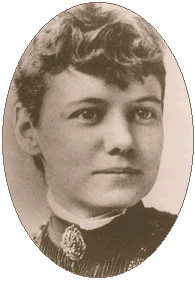 Female (–10): In almost any society in Victorian times, women have a lot less freedom, authority, and opportunity, and generally are not expected to get involved in adventures. Even those of high Social Level, who are allowed to be eccentric, will be treated in a patronizing, diminishing manner as a matter of course. While an adventuress can diminish the effect by finding a pliable "gentleman companion" for an Associate, it's never completely eliminated.
Female (–10): In almost any society in Victorian times, women have a lot less freedom, authority, and opportunity, and generally are not expected to get involved in adventures. Even those of high Social Level, who are allowed to be eccentric, will be treated in a patronizing, diminishing manner as a matter of course. While an adventuress can diminish the effect by finding a pliable "gentleman companion" for an Associate, it's never completely eliminated.
Income (variable): Those of high Social Level will usually receive stipends on a monthly basis from land, holdings, stocks, or investments. For every character point spent a character receives £10/month or equivalent. Income from active pursuits like working in the military doesn't cost character points. See also Wealth and patents.
Race (–20): Caucasian Europeans rule all the worlds, and those who aren't of European white descent are always at a disadvantage. They can never be of a Social Level above Middle Class, and even that is very unlikely. They will be talked down to, treated as inferiors, and ignored by many, even other non-whites. Characters might be black, Turkish, Indian, Aborigine, Native American, Oriental, or even Martian, and for each of these there are other names they're more likely to be called. (Note that Hill and Canal Martians will rarely have a Strength over +3 or an Endurance over 0, and those born in normal situations will have limited skills available to them.)
Social Level (variable): Social level is very important in Victorian society, where the scope of your life is in large part shaped by where you were born. Generally, your social status determines how people will react to you and what they'll expect of you. With some education and money, you can sometimes rise above your level, but the level usually prevents you from getting that education and money in the first place. Even if you do, people who find out the circumstances of your birth will treat you accordingly, despite your current wealth or situation. It's hard to get away with pretending to be a higher social level than you were born to, because even in the age of the British Empire on which the sun never set, the noble families knew each other. Available social levels are:
Social Level: Rural Laborer (–30): Those who eked out a bare living working the sprawling farms, giving most of their time to the fields of the gentry and only a little to their own humble vegetable gardens and cottages, if they had them. Most never saw money and few learned anything of reading or the world beyond their villages, but those who could, escaped to distant colonies in the service of the military or business interests.
Social Level: Working Class (–20): The largest group of urban workers. Stereotyped as immoral, riotous, violent, and all too fond of drink, they were usually struggling through bone-numbing work, overcrowded living conditions, disease, and no hope of things getting better. Many were first in line to head to the colonies in hopes of a better life, sure it couldn't get much worse.
Social Level: Tradesman (–10): With some luck and lots and lots of hard work, the artisan or craftsman might attain some small prosperity. Very likely to be literate, religious, and consumed with an entrepeneurial spirit, he is poised precariously between the working poor and the middle class's aspirations towards the gentry's life.
Social Level: Middle Class (0): Folks that work for a living, yet can afford some of the better things in life: a house, a fine suit of clothes, some education, and the hopes their children might do still better. Scorned by the upper classes for dirtying their hands with trade and business and the sordid details of money, they are respected by others for the virtues of thrift, hard work, self-reliance, and piety. They work in the trades, manufacturing, importing and exporting, the church, the courts, and the great bureaucracies, usually in higher positions like management.
 Social Level: Gentry (15): Those who own land or property, might have a minor peerages or baronetcies, and have a noble lineage, but don't still own a manor and great amounts of lands. They often take positions as magistrates, sheriffs, litigants, or officers in the military, but do not violate taboo by involving themselves in "trade".
Social Level: Gentry (15): Those who own land or property, might have a minor peerages or baronetcies, and have a noble lineage, but don't still own a manor and great amounts of lands. They often take positions as magistrates, sheriffs, litigants, or officers in the military, but do not violate taboo by involving themselves in "trade".
Social Level: Wealthy Gentry (20): As the Gentry, only from a very wealthy family.
Social Level: Aristocracy (35): Born to a wealthy land-owning family, aristocrats generally are well-educated but rarely in practical pursuits, except perhaps medicine, politics, diplomacy, the Church, or science, in the case of sons other than the firstborn. There are only about 200 aristocrat families in England in the Victorian period.
Social Level: Royal Family (50): Generally not available to player characters, since it's unlikely any member of the royal family of any of the great European nations could spend much time adventuring.
Note that other items listed here are generally associated with different social levels, such as Income or Wealth.
Victorian Values (–10): The mores of Victorian society were widely adhered to throughout European cultures. These values took the form of both virtues and vices; for instance, the respect for honesty led to personal integrity and trustworthiness, but also disdain for other codes of behavior and a vulnerability to dishonesty. Other traits valued in Victorian society are loyalty, enthusiasm, good sportsmanship, genteel manners, bravery, a sense of aloof detachment, a respect for science and progress, a sense of manifest duty towards inferiors, piety and charity, and determination. Most characters should have some Victorian values if they expect to fit into the world around them.
Wealth (variable): Generally one's wealth is directly dependent on one's Social Level, though unusual circumstances can change that. Normal starting wealth is £350 or the equivalent in equipment. Double it (£700) for five character points; you can double it again for another five points, as often as you like. (£1400 for 10, £2800 for 15, £5600 for 20, etc.; GM's discretion beyond that.) Get back five character points by halving it (£175); you can halve it again for another five points, in the same way. (£88 for –10, £44 for –15, £22 for –20, etc.; GM's discretion beyond that). See also Income.
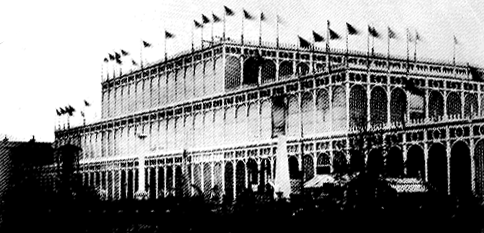
Use the skill trees provided with the following alterations:
 CRAFTS (CR):
CRAFTS (CR):
KNOWLEDGE (KN):
MIND & MAGIC (MI):
OUTDOOR (OU):
 SCIENCE & TECHNOLOGY (SC):
SCIENCE & TECHNOLOGY (SC):
SOCIAL SKILLS (SO):
SUBTERFUGE (SU):
TRANSPORTATION (TR):
WEAPONS & ARMOR (WE):
![]()
 Inventions & Inventing
Inventions & Inventing Characters with skill in the sciences and engineering skills may have developed inventions of amazing capability; the inventor is a staple of the science fantasy genre, and the inventions run to the absurdly implausible (by modern standards), but they provide many story hooks and add essential flavor. And since these devices are generally bulky, dependent on special energy sources, unreliable, and prone to fall apart during the adventure, they probably won't imbalance the game. So the GM should tone down his natural tendency to withhold the more exotic devices for the sake of play balance; that balance can be easily enough taken care of later.
Characters can be inventors if they have skill in experimentation and research methods. Specifically, they must have the SCIENCE & TECHNOLOGY (SC) skill Scientific Method : Research : Experimentation. Higher skills will be required to make more difficult inventions, or finish them more quickly. We'll consider the case of Otto Stark, who has a skill of 12 in Experimentation, and thus considers himself a talented amateur inventor.
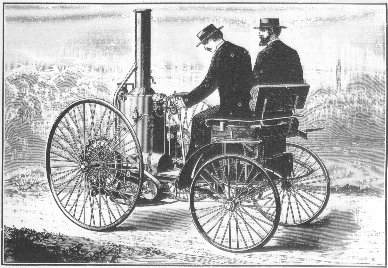 Effort expended on working on an invention is reflected by developing a skill for that invention. The skill is a child skill of the relevant science or engineering skill; for instance, inventing an ether propeller would be reflected by a skill named Invention - Ether Propeller listed as a child of Hard Sciences : Physics : Ether Physics or Transportation Engineering : Spaceships : Ether Propellor (player's choice). This skill uses the same stat and difficulty modifier as its parent. Inventions are usually depth 3 or 4; those with a more specific focus, based on a more specific field of scientific inquiry, will end up at a greater depth, and thus easier to invent, while those which draw on more general principles will take more effort.
Effort expended on working on an invention is reflected by developing a skill for that invention. The skill is a child skill of the relevant science or engineering skill; for instance, inventing an ether propeller would be reflected by a skill named Invention - Ether Propeller listed as a child of Hard Sciences : Physics : Ether Physics or Transportation Engineering : Spaceships : Ether Propellor (player's choice). This skill uses the same stat and difficulty modifier as its parent. Inventions are usually depth 3 or 4; those with a more specific focus, based on a more specific field of scientific inquiry, will end up at a greater depth, and thus easier to invent, while those which draw on more general principles will take more effort.
For any invention, the GM must assign (or look up, on p.81 of the 1988 hardback edition of Space: 1889TM or in other sources) two numbers reflecting how difficult the invention is to develop and perfect. The first is the research requirement number; it reflects how much understanding of the underlying principles is required to invent the device, and ranges from 3 (for a hand lamp) to 42 (for a gravity control device). The second is the experimental success number; it reflects how difficult it is to make the device reliable, and ranges from –4 (for a fuel refiner) to 5 (for an earthquake control device).
Based on these, invention is a three-step process. Let's look at the process for Otto inventing an electric engine (research requirement 10, experimental success –1):
Theory: The character must have a sufficient grasp of the underlying principles and techniques to be able to understand the invention and how it works. The GM and player will agree upon a parent skill, a science or engineering skill, in this case Electrical Engineering : Engines. Before the character can even begin, he must have that skill greater than or equal to the research requirement. In this case, Otto needs to have at least a 10 in Electrical Engineering : Engines. Fortunately he already has an 11.
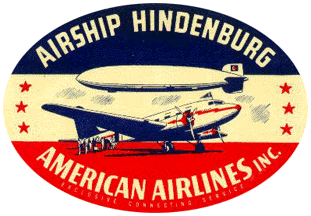 Development: Once the theory requirement is met, the character can develop the skill for the invention itself: Electrical Engineering : Engines : Invention - Electric Engine. Effort on this skill represents work spent on developing the invention, and the skill's value represents how well the invention's development is going. Add the research requirement, the experimental success, and 5, then make the number negative and write it in the Misc column of the skill. Until the total is greater than 0, the invention is still "on the drawing board". For Otto's skill, we add 10 + –1 + 5 = 14 and write –14 in the Misc column. He'll need to spend some effort (either in this skill or its parent) to get the total over 0; until he does, the invention is still just an idea that needs work. Eventually, Otto spends enough points to bring his skill to a total of 5.
Development: Once the theory requirement is met, the character can develop the skill for the invention itself: Electrical Engineering : Engines : Invention - Electric Engine. Effort on this skill represents work spent on developing the invention, and the skill's value represents how well the invention's development is going. Add the research requirement, the experimental success, and 5, then make the number negative and write it in the Misc column of the skill. Until the total is greater than 0, the invention is still "on the drawing board". For Otto's skill, we add 10 + –1 + 5 = 14 and write –14 in the Misc column. He'll need to spend some effort (either in this skill or its parent) to get the total over 0; until he does, the invention is still just an idea that needs work. Eventually, Otto spends enough points to bring his skill to a total of 5.
For inventions that the character starts the game with, or develops between adventures, simply spend development points as you normally would. If the character is trying to develop an invention during game play, he can use development points set aside for the purpose, or trade in plot points to get the development points he needs. If the GM allows, he can "borrow" development points against those he'll earn at the end of the adventure; in essence, the time he's spending on working on the invention takes away from time he'd otherwise have spent learning things during the adventure. The GM should feel free to deny this, especially if he's not sure the character will get enough development points to cover the debt.
Experimentation: Once the invention is out of the development stage, the character has to actually build it, test it, refine it, and bridge the gap from theory to practice. Often this process is time-consuming and requires expenditure of equipment and parts; some inventions will have to be rebuilt over and over, since failures destroy the working model. The process normally takes a number of weeks equal to the research requirement, and costs determined by the GM. To successfully complete this phase, the character's skill in Experimentation must be at least equal to half the research requirement, plus the experimental success. Every additional point of skill in Experimentation will reduce the time by a week, and might reduce the costs as well (GM's ruling). In this case, Otto was expecting to have to take ten weeks in experimentation. He needs 10 + –1 = 9 points in Experimentation, but since he has a 12 in that skill, he can get it done 3 weeks quicker, that is, in 7 weeks.
If a character has completed Theory and Development but doesn't have enough skill in Experimentation to complete the Experimentation phase, the concept is sound, but he just can't get it to work. He could recruit the help of another inventor with more skill in Experimentation, provided he's willing to share in the profits and reveal his designs and blueprints to the other inventor. But since he can't get a patent until he has a working model, doing so can be risky; an untrustworthy collaborator might disappear, then develop the invention on his own. Fortunately this is a rare occurrence.
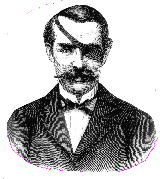 The Resulting Invention
The Resulting Invention The result of this process is a positive skill in the invention. The skill shown represents, not an actual skill of the character, but the quality and reliability of the invention itself. A skill of 20 in an Invention skill is a very reliable, high-quality, well-refined invention. The GM can make skill rolls against this skill to see how well the invention performs under difficult circumstances. The skill also indicates how effective the invention is; for instance, a higher-rated engine will be able to exert more force or turn faster than a lower-rated one, at the GM's discretion. The character can invest more time in refining the invention just by spending more development points on the skill, and thus increase its effectiveness, quality, and reliability.
 Combination Devices
Combination Devices Combination devices are devices that are really just a combination of two or more other inventions, where those inventions derive from different fields of science or engineering. For instance, an aeroplane combines a glider (transportation engineering, or physics) with an engine (electricity, steam, or combustion). To develop a combination invention, a character must first develop the underlying inventions (with a positive skill in each). Also, the GM may require the character to spend time or money on the combination invention itself. However, the character doesn't need to add another skill, and spend more development points.
To calculate the effective skill (that is, the quality and reliability) of the combination invention, start with the lowest skill of the component inventions. Then, for each other component invention in the combination, subtract 2 if that component's skill is 1–10; subtract 1 if the component's skill is 11–20; otherwise, don't subtract anything. If the result is 0 or lower, the combination just doesn't work yet (and the character will need to refine some of the components to get it to work). For example, if Otto has a 5 in Inventions - Electric Engine as described above, and an 13 in Inventions - Glider, his aeroplane would be rated a 4. That's the lower skill of 5, minus 1 since the other skill is 11–20.
Characters who've invented something will probably file for a patent with their local patent office, then sell the rights to manufacture the invention and sell it. (The GM should keep in mind the effects this might have on society if the item is of widespread enough interest, and its manufacturing cost is within reach of enough people. However, putting too much emphasis on such play balance factors might violate the spirit of the science fantasy genre.) The GM may wish to play out the process of applying for the patent, or selling the rights, to give the player freedom to make decisions for the character (or if this leads to an interesting story hook).
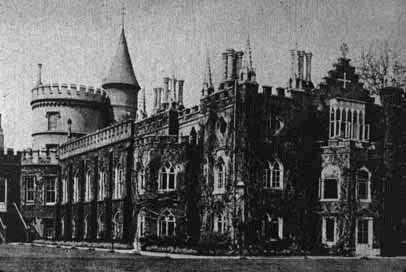 However, if everyone would rather let this be background material, the GM can instead award the character a monthly income from royalty checks from some unspecified manufacturer. Each patented invention is worth from £1–10/month, depending on how useful and marketable it is (GM's decision). For higher quality inventions (those with skills over 5), increase its income value by £1/month for every five points; thus, add £1/month for skill 6–10, £2/month for skill 11–15, £3/month for skill 16–20, etc. For example, the GM might decide Otto's electric engine is worth £6/month (it's pretty useful, but not so much that everyone will want one). If he raises his skill in the invention from 5 to 6, it'll become worth £7/month, and if he ever reaches a skill of 11, it'll shoot up to £8/month.
However, if everyone would rather let this be background material, the GM can instead award the character a monthly income from royalty checks from some unspecified manufacturer. Each patented invention is worth from £1–10/month, depending on how useful and marketable it is (GM's decision). For higher quality inventions (those with skills over 5), increase its income value by £1/month for every five points; thus, add £1/month for skill 6–10, £2/month for skill 11–15, £3/month for skill 16–20, etc. For example, the GM might decide Otto's electric engine is worth £6/month (it's pretty useful, but not so much that everyone will want one). If he raises his skill in the invention from 5 to 6, it'll become worth £7/month, and if he ever reaches a skill of 11, it'll shoot up to £8/month.
The character should keep track of all patents issued and what they're currently earning in royalties. The GM should feel free to rule that royalty earnings change because of events in the game world, such as the development of a much better invention by a rival inventor.
![]()
When you're referring to the rules or supplementary materials, including adventures, for Space: 1889TM, you can use these guidelines for converting any listed values to the relevant Prism numbers.
| Prism | Space: 1889TM |
| any skill | corresponding skill x 3 |
| any stat | corresponding stat x 2 – 7 |
| Hp | End x 10 + 20 |
| LC | Str x 210 – 270 |
| CC | LC / 3 |
| MV | Agl x 10 + 65 |
| DB | Agl x 2 – 7 |
| Delay | 44 – Agl x 4 |
 Characters
Characters Generally you don't need any more detail about your NPCs than that provided by the write-ups in the supplement in which they appear. In these cases, simply multiply any listed skills by three before using them. Skills not listed generally won't be needed, and can be filled in using the normal Prism rules for NPCs. Convert stats by doubling and subtracting seven; S is Str, E is End, D is Agl, Q also uses Agl, I is Int, P has no equivalent, W is Chr, and R also uses Int. Other statistic conversions can be seen in the chart to the right.
It's best to find a corresponding creature and use its values, or develop the creature from scratch from the description. However, you can use these conversions for a rough guideline, a starting place, or when you're in a hurry.
| Prism | Space: 1889TM | |
| Delay | GM's decision | |
| AT (DB) | GM's decision; high Save should usually translate to high AT or DB | |
| MV | Move x 5 | |
| Hp | Wnds x 15 | |
| Attacks | Num Attacks | attack hit dice (first value) |
| OB | required hit number (second value) x 20 | |
| Size | wound dice (fourth value): 1–2=Small, 3=Medium, 4=Large, 5–6=Huge | |
| Type | attack type: Teeth=Bite, Fangs=Bite, Swarm=Sting, Coils=Crush, Horns=Horn, Tentacles=Crush, Tail=Bash, Talons=Claw, Crush=Trample, Claws=Claw, Stinger=Sting, Drop=Crush | |
For example, a steppe tiger has a 250 MV, 150 Hp, and attacks 80SBite(x2)/60SClaw(x3).
Multiply the reliability of any invention listed in a Space: 1889TM book by three to get the effective skill of the invention. Or divide a skill by three and round down when comparing inventions with those listed in Space: 1889TM books.
 Task Difficulties
Task Difficulties Normally the GM will simply use difficulties from Prism rules, such as those in Chart 14.2 (divided by 5 as per the skill tree notes). When a Space: 1889TM book mentions a task difficulty, it may do so with a word (easy, moderate, difficult, formidable, or impossible) or a target level number (usually from 4–20). In the latter case, subtract the target level number from 8 and apply the result as a modifier to the skill roll. For instance, a target level number of 12 yields an 8 – 12 = –4 modifier to the skill roll. An easy task gets a +4; moderate gets no modifier; difficult gets a –4; formidable gets –8; and impossible gets a –12.
![]()
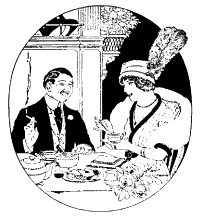 Space: 1889 © Copyright 1996 by Frank Chadwick.
Space: 1889 is a registered trademark of Frank Chadwick. All rights reserved. Use of the title and "fair use" references to the work are not to be considered a challenge to Frank Chadwick's proprietary rights. This work is intended to supplement, not replace or duplicate, official Space: 1889 publications, and references to them are meant to assist only. No claims are made to copyright or trademark on those works, or official sanction by Frank Chadwick or GDW. Really, folks, his work belongs only to him, as do all credits and rights; frankly I hope it encourages you to rush out and find a copy of Space: 1889 and all its supplements right away. It'll be worth it.
Space: 1889 © Copyright 1996 by Frank Chadwick.
Space: 1889 is a registered trademark of Frank Chadwick. All rights reserved. Use of the title and "fair use" references to the work are not to be considered a challenge to Frank Chadwick's proprietary rights. This work is intended to supplement, not replace or duplicate, official Space: 1889 publications, and references to them are meant to assist only. No claims are made to copyright or trademark on those works, or official sanction by Frank Chadwick or GDW. Really, folks, his work belongs only to him, as do all credits and rights; frankly I hope it encourages you to rush out and find a copy of Space: 1889 and all its supplements right away. It'll be worth it.
This document itself is © Copyright 1999, 2000 by Frank J. Perricone ![]() ; comments are appreciated. Permission is granted to link to this document (as if you need me to tell you that!); large-scale quoting or reprinting can only be done with the permission of the author, which probably won't be denied provided credit is given to the author.
; comments are appreciated. Permission is granted to link to this document (as if you need me to tell you that!); large-scale quoting or reprinting can only be done with the permission of the author, which probably won't be denied provided credit is given to the author.
All art on this page is public domain so far as I know, except for the renderings of the Aphid-class ether flyers (here, here, and here) which are copyrighted by, and used by kind permission of, Mateen Greenway.
 Table of Contents
Table of Contents
| |||||||